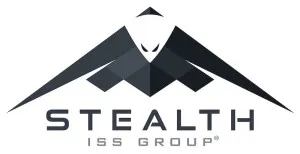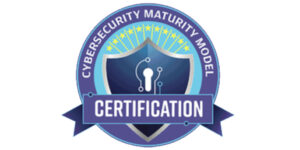This paper identifies new and emerging pervasive computing and its implications on our society and business world. Throughout this paper searches were done on the internet, various professional magazines as well as research papers and scientific documentations to identify what the most valuable technologies are and which ones are the ones that will become popular in the near future.
Pervasive computing is the trend towards increasingly ubiquitous, connected computing devices in the environment. This trend is being brought about by a convergence of advanced electronic – and particularly, wireless – technologies and the Internet. Pervasive computing devices are not personal computers as they are being used now or have been in the past, but very tiny – even invisible – devices, either mobile or embedded in almost any type of object imaginable, including cars, tools, appliances, clothing and various consumer goods – all communicating through increasingly interconnected networks. With this trend toward pervasive computing, many new inventions have been identified that will not only change the world how we know it today but also benefit our society, research and businesses and move it to the next level.
Example of pervasive computing: Medical Inkjet Printer
The first technology that can be considered a major breakthrough once it has been fully tested is something that can that be applied especially in the medial and health field. This technology is a “medical inkjet printer”. It is a printer designed to spray tiny living cells into three-dimensional forms of human organs. For nearly two decades scientists have worked on this technology, perfecting the science of regenerating human tissues, which is the science of building new body parts.
The medical inkjet printer does not only benefit the medical and science research fields such as cell biology, materials science, and stem cell biology. It also brings the advantage to go one step further in the field of regenerative medicine, and to start creating more complex organs to help patients. It can be used to “heal” existing cells to create more practical solutions such as replacing everything from diseased heart muscle to worn out cartilage and failing kidney cells.
Another major advantage and success this technology shows is the speed. It takes only a few weeks to grow a complete new human organ which then again can be used for patients needing transplants. Since these organs are not made out of human cells from other people, the success rate is very high after transplantation, as there is no risk of rejection of the new organs. Although this technology is relatively new and still requiring a lot of research, it certainly will be contributing to our society by improving not our health but also our health standards and medial research (Park, 2007).
Another Example: Remote Aerial Vehicles
Another very important technology that will not only bring many advantages to our society, but also businesses and national security is a keychain-size, remote-controlled aerial vehicle that will transmit security data to remote locations. This technology is currently being developed by Lockheed Martin and can be used for monitoring, surveillance, recognition and data collection in the military as well as commercial sector. These surveillance devices can be implemented in small aerial vehicles with infrared cameras and built-in brains that can capture license plate images and match them in milliseconds to police records. This is a real life project being tested in cities like New York. It has led to a lot of success since the identification and tracking of cars becomes a lot faster and easier. It will also make it easier to recover stolen cars or even provide the needed help that boarder patrols are looking for.
Having this technology “patrol” our borders by using the eyes in the sky will certainly allow for a more efficient surveillance than it is currently done. A satellite has already been launched that can daily collect up to 750,000 square kilometers of imagery and is able to pick out suitcase-size objects. Although there is a lot of controversy especially when it comes to privacy, it certainly is a technology that will become a major part of our lives that will allows us to take advantage of many things that we did not have before. And all the advantages this technology brings with it will outweigh the privacy concerns that critics have at this point (Wolf, 2007).
Another Example: Flexible Transistors
Flexible transistors is another new technology that will benefit our society and business in the long run. Although this technology is fairly new flexible transistors will be implemented in our daily lives without us even noticing it. A flexible transistor is one which, unlike present, rigidly-structured transistors, can be successfully used in packages that can be curled up, wrapped, or bent. Although many people might not be aware of how this can be of advantage, this technology can allow the average user to own a display screen that can be rolled up and stowed in a small space if no longer used.
In the past years IBM has developed a very thin, flexible and inexpensive type of transistor that could actually be sprayed onto plastic. This technology has been used to create a combination of an inorganic semiconductor that conducts electricity and an organic material that modulates the structure. This has allowed the scientists to combine the materials into two separate layers, to create a coating thinner than a human hair. This procedure is also currently being explored by using different materials and combing them at room temperatures.
Current transistors are made of materials that must undergo high-temperature processing, and consequently can only be placed on heat-resistant surfaces. This invention is something that will allow our society to apply this technology in almost any location and for any required purpose. Possibilities are enormous and once this technology will become commercialized and affordable, our society might even be looking at carrying our own rolled up displays in our back pocket (Bartholomew, 2000).
Another example of pervasive computing: smart homes or buildings
Another major technological advancement that has been studied and test in the past few years is implementing the latest technologies and designing “smart homes or buildings”. Smart homes or buildings are usually new houses or buildings that are equipped with special structured wiring to enable occupants to remotely control or program an array of automated home electronic devices by entering a single command. For example, a homeowner on vacation can use a touchtone phone to arm a home security system, control temperature, switch appliances on or off, control lighting, program a home theater or entertainment system, and perform many other tasks.
The idea of a smart house is expanding rapidly as electronic technologies converge and new inventions and smaller devises are being designed. Such home networks will not only bring advantages in the filed of communications and entertainment but also security convenience for the inhabitants as well as “luxuries” of being able to start “cooking” when leaving work as well as using information systems within the house and remotely accessing various video surveillance and audio.
A new technology, called Powerline Carrier Systems (PCS) is being implemented to send coded signals along a home’s existing electric wiring to programmable switches, or outlets. These signals convey commands that correspond to “addresses” or locations of specific devices, and that control how and when those devices operate. This technology can have a very positive impact on the inhabitants and their smart homes when considering that no special wiring needs to be implemented as all houses do already have electrical outlets that can be used for this purpose (Redriksson, 2007).
Another example: Virtual Reality
Virtual reality is another major technology that will be of use for the commercial as well as private sector and has shown to be an emerging technology in the past few years. Although this technology is very new and still requires development, it is a technology that allows a user to interact with a computer-simulated environment. Most current virtual reality environments are primarily visual experiences, displayed either on a computer screen or through special or stereoscopic displays, but some simulations already include additional sensory information, such as sound through speakers or headphones. The simulated environment can be used for real world training, for example, simulations for pilot or combat training. Although there are currently technical limitations such as processing power, image resolution and communication bandwidth, those limitations are expected to eventually be overcome as processor, imaging and data communication technologies become more powerful and cost-effective over time.
The social impacts of virtual realities have been studied in the past showing that this technology will bring important changes in human life and activity. These changes will consist of gradual “migration to virtual space,” resulting in important changes in economics, worldview, and culture. Also once virtual reality will be integrated into daily life and activity and will be used in various human ways, the virtual environment may be used to extend basic human rights into virtual space, to promote human freedom and well-being, and to promote social stability as we move from one stage in socio-political development to the next. Also it is being argued that Techniques will be developed to influence human behavior, interpersonal communication, and cognition (i.e., virtual genetics) (Stanney, 2002).
What other fields may this impact?
The future of virtual reality is very positive as it can be used in almost all entertainment, work and education environments, The probably biggest sectors that will take advantage of virtual reality are not only the media industry such as game companies, TV media, motion pictures, but also the scientific field. Especially in the archaeological field, this technology can be of advantage in the Heritage and Archaeology. But also the educational as well as the medial field can take this technology and implement it in therapeutic uses and health education. Even the commercial sector can benefit from this technology in the field of marketing ad sales. Virtual reality, in an area such as real estate would allow the potential buyer to easily view houses without having to travel and this will most likely generate more sales than the current and old fashioned sales approach (Robles-De-La-Torre G., 2006).
Last example: Sentient computing
Sentient computing is probably or will probably be one of the biggest breakthroughs in technology. This is a form of ubiquitous computing which uses sensors to perceive its environment and react accordingly. A common use of the sensors is to construct world models which allow location-aware or context-aware applications to be constructed. There have been a few prototypes in the past years such as systems that provided a location accuracy of about 3 cm. This technology can be used for measuring and surveying buildings, GPS tracking, “follow-me phone” which would cause the telephone nearest to the recipient to ring including various locative games and teleporting desktops via VNC.
If these project sensors were added to today’s computing and communications technology, and sentient computing took account of a machine’s environment in order to make it more responsive and useful. Sentient computing systems are always on, ubiquitously available, and can adapt to their users. The goal of sentinel technology and computing is to create convivial technologies that are easy to live with and that help our society, business and research to work more efficiently by having the technology adapt to us and our current needs and location rather than us adapting to the technology (Piquepaille, 2003).
Integration into environment
Pervasive computing is the next generation computing environments with information & communication technology everywhere, for everyone and at all times. Information and communication technology will be an integrated part of our environments: from toys, milk cartons and desktops to cars, factories and whole city areas – with integrated processors, sensors, and actuators connected via high-speed networks and combined with new visualization devices ranging from projections directly into the eye to large panorama displays or displays that can be rolled up.
The goal of researchers is to create systems that are pervasively and unobtrusively embedded in the environment, completely connected, intuitive, effortlessly portable, and constantly available. Among the emerging technologies in this paper there are many more that are emerging, being developed and slowly integrated in our social and business environment. These technologies are just in the beginning phases but in the near future, as technologies become more advanced, available on the commercial market and affordable, these technologies will become part of our daily lives.
![]()
![]()
![]()





